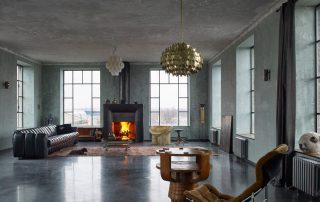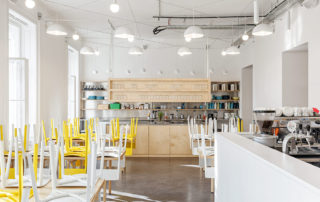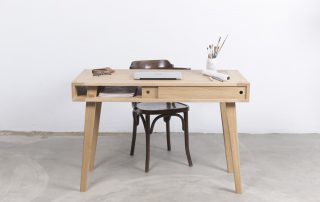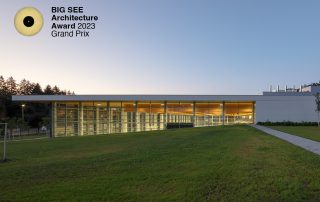After being the Dean of the Pécs Faculty of Engineering and Information Technology and after holding the position of the Director of the Institute of Architecture of Pécs in Hungary, Bálint Bachmann became (in 2018) the Rector of the Budapest Metropolitan University, the largest private higher education institution in Hungary. Great!
The period he spent in Pécs is characterised by his extraordinary work and ideas. Assisted with his young associates, he spent ten years trying to find the right way to improve their school international education rankings, with an aim to attract students from all over the world to come and enrol on their programme in this small place in Hungary. The town’s history, architecture, tradition and everyday atmosphere have definitely contributed to a pleasant university atmosphere and students’ well-being. Bachmann knew how to use this potential for the prosperity of the school. Apart from managing and supervising a complex institution such as a school of architecture, and besides being a full professor, he has also pursued the career of a practising architect. He has accomplished some great projects that have already become an important part of the town landscape, and he also managed the town’s urban development as well as the entire urban complex growth.
His qualities of a creator, manager and organiser were spotted when he was included in numerous boards and committees or when he was selected to represent Hungary at the Venice Biennale of Architecture. He was picked out every time when they needed someone efficient, creative and decisive as well as when someone who was determined to reach the goal was required.
People like Bálint Bachmann surpass all our expectations, because they know how to turn their dreams into reality.
Curator of the award: Andrija Rusan; Oris
Interview
Prepared by Vesna Skubic
Portrait photo: Kaszás Tamás
While studying architecture at the School of Architecture Faculty of Engineering and Information Technology at the University of Pécs, you were also doing your internship in some international architectural offices. Afterwards, however, you started focusing on the academic career. What was the key milestone, the determining factor that triggered your decision to pursue an academic career path?
Before I earned my master degree in my home city, I have spent 5 years in Germany and graduated in Architecture at the Fachochschule in Würzburg. Beside my later international experience as an acting architect, my study time had a decisive effect on my career in education. My father was a professor of Architecture in Pécs, but I have never planned to follow his footsteps, until I was involved in students’ activities between my German school and the one my father worked for. We organised exhibitions, workshops, I even drove the minibus to Pécs and back to Würzburg to manage the cooperation. The creative atmosphere of the German higher education that time – we were just after the collapse of the communist regime in Hungary – influences my attitude about architecture ever since. Returning back to Pécs after my studies abroad I haven’t stopped working on university projects and it has been more than 25 years ago.
At the School of Architecture Faculty of Engineering in Pécs, you earned the titles of an associate professor and a full professor. Could you explain your view on architectural education. What is your approach to teaching architecture?
From 1997 I went all the rungs of the ladder, I started as a teaching assistant and finally I was elected for dean 2009. I was the oldest among the young, who followed the generation of the founders of the School of Architecture in Pécs. We continued their legacy of atelier-like education, that focuses on the creative environment and the interaction among professors and students. I was inspired by teaching method of Bauhaus, we introduced courses of the related art disciplines such as sculpturing, painting, glass art. We balance the artisan skills of the students with up-to-date engineering knowledge to prepare the future generation of architects for the complexity of the profession.
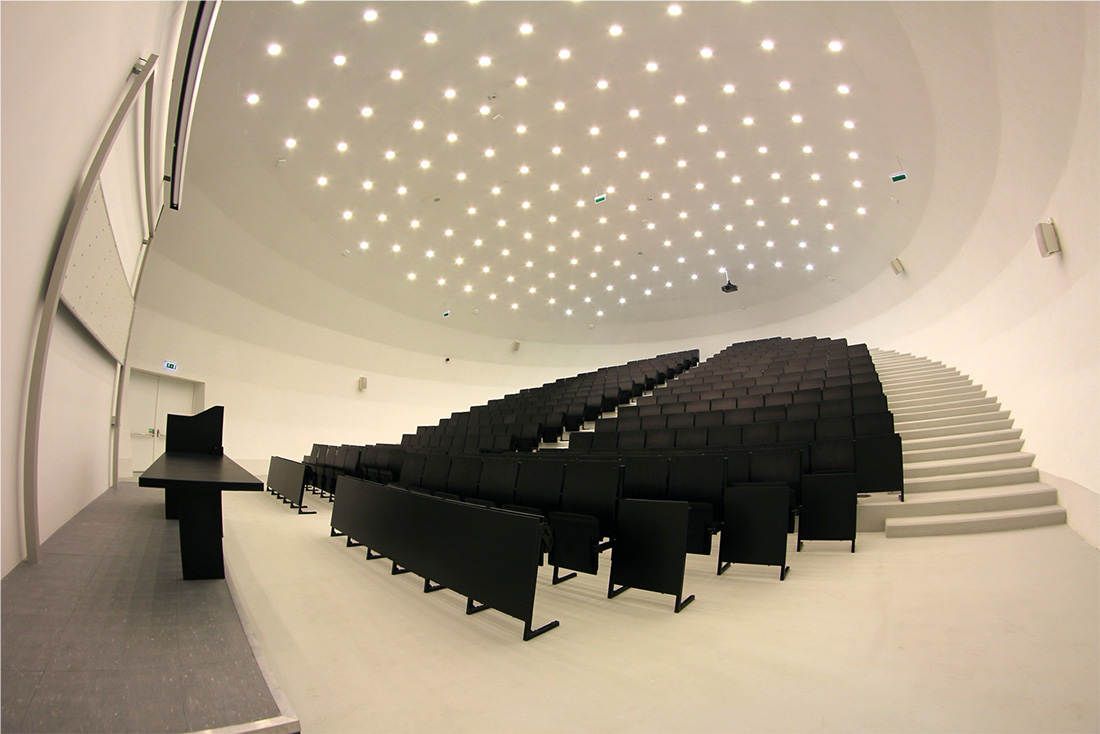
Szentágothai Research Centre of the University of Pécs (2012)
Architect: Z. Bachman, B. Bachmann, Gy. Stocker, Cs. Rohoska, A. Hutter
Interior: K. B.Soós, A. Borsos, E. Bachmann
The advanced research centre of the university has seminar rooms, core facilities for research and high security labs for high performance laser and virology. The three cubes are maintained by renewable energy resources, the installed sensors can intervene into the allocation of heating and cooling energy of the system, resulting in a environmentally conscious and cost effective operation.
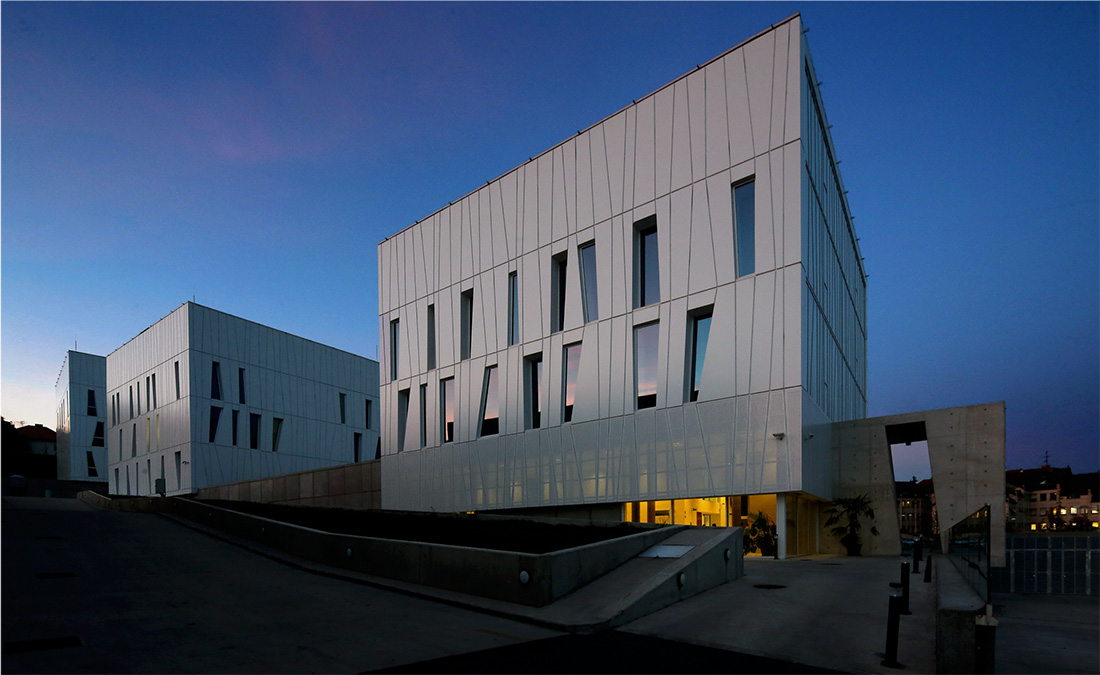
Szentágothai Research Centre of the University of Pécs (2012)
What do you appreciate most about teaching younger generations? In your view, why is it important to talk about intergenerational coexistence?
I enjoy the atmosphere of fresh ideas and the variety in the everyday work. During the 20 years I have spent in higher education we are in permanent change, it allows us to try new methods of teaching and to integrate necessary new content to the study programme such as environmentally conscious thinking or the implementation of building information modelling (BIM) as the tool of digital planning. The young generations are opened for innovation, I like their sincerity as they stand up for what they believe in, and I appreciate their social sensitivity shaping the modern lifestyle through design. Since large design companies incorporating all the professional skills to learn as a young architect were replaced by small offices of 1-3 individuals, the interrelationship between student and professor during the studies became the last chance to transfer the necessary knowledge to be prepared for the job.
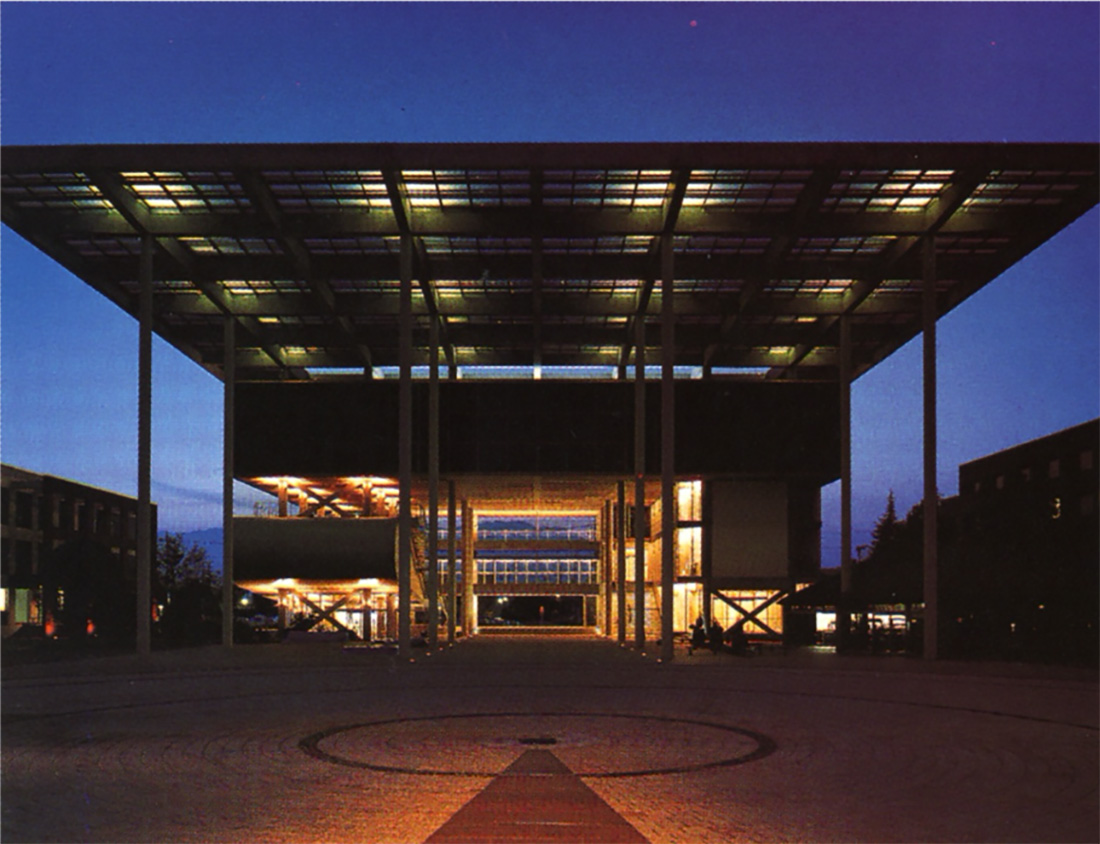
Yamanashi University, Japan (1999)
Architect: Pálffy & Associates
During my employment in Tokyo I worked on this campus development project with György Pálffy
It can be seen that some talented individuals from the region are moving westward. What is your advice regarding this issue? How can we find a solution to this problem? Do you think it really is necessary to prevent that brain drain.
My students often ask me if they should go abroad with Erasmus fearing to lose a semester. I used to answer, that the time they spend in a foreign country counts double in terms of private and professional experience. The fact that young people spend part of their studies or career abroad is not necessarily brain drain. They might find their fortune there, but many of them will return home and make a benefit for all of what they have learnt. On the contrary I believe, we shall promote Eastern European countries more for international students and young professionals to come to us. Beside the economical benefit of having talented people from all around the world in our schools and offices, it would have an enormous effect on cultural openness and acceptance.
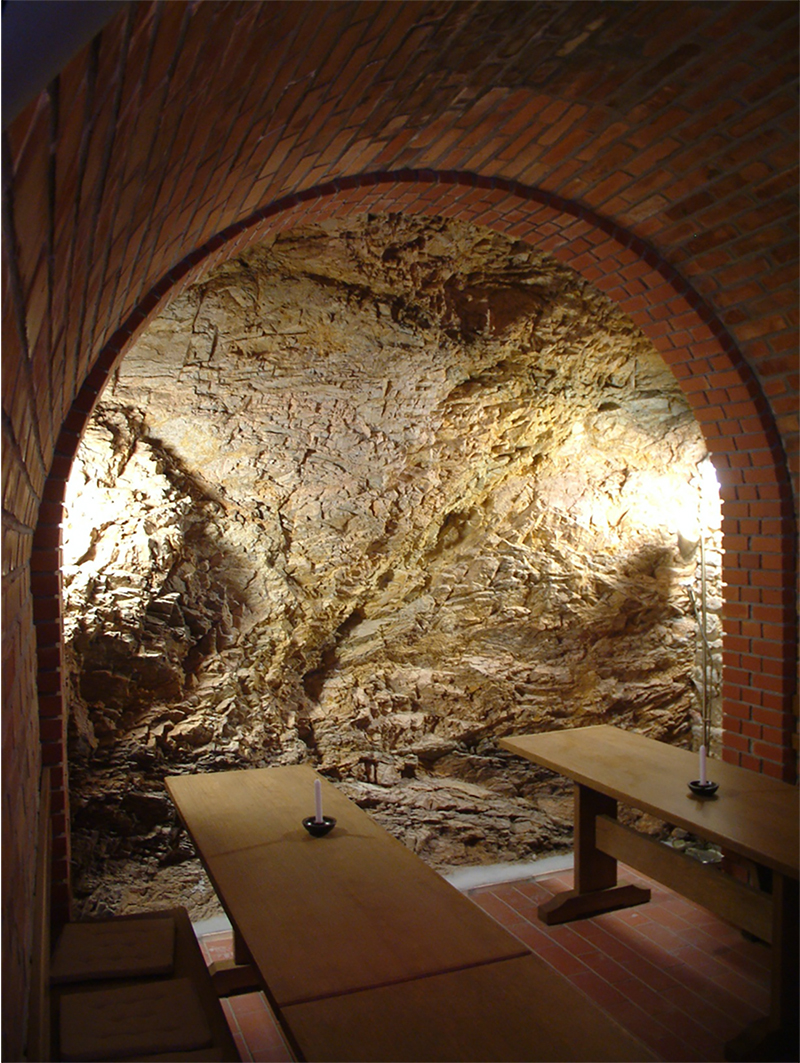
Winery in Pécs (2006)
Architect: Z. Bachman, B. Bachmann
Interior: K. B.Soós, K. Kovács Andor
Historical winecellar was extended to store and deliver the botteled products of the Somogyi family winery
As a professor and later the dean, you introduced English language in the curriculum of the architecture, civil engineering and engineering study programmes at the University of Pécs. You also established cooperation links with some world-renowned universities.
I was lucky to learn English as a child and to study later in Germany for 5 years. My foreign language skills allowed me to work for international firms and to be employed in Japan. I took advantage of my experience abroad both in private life and my professional career. Inspired by my personal inputs, in 2013 we decided with my colleagues in Pécs to offer our study programmes for international students. The professors – young and young at heart – took part in an 8-week training at a partner university in Denver, Colorado to be prepared for teaching in English. The project turned out as a great success, we started with only 2 students from China, now we have over 500 international students from 50 countries in Pécs. The cooperation with Metropolitan State University of Denver continued, we send every year two architects there to conduct 6 subjects for engineering students for their better understanding of architecture during their professional work. During the years a dozen of young colleagues had the chance to experience the service based education of a US university and to utilize that knowledge in their teaching in Hungary.
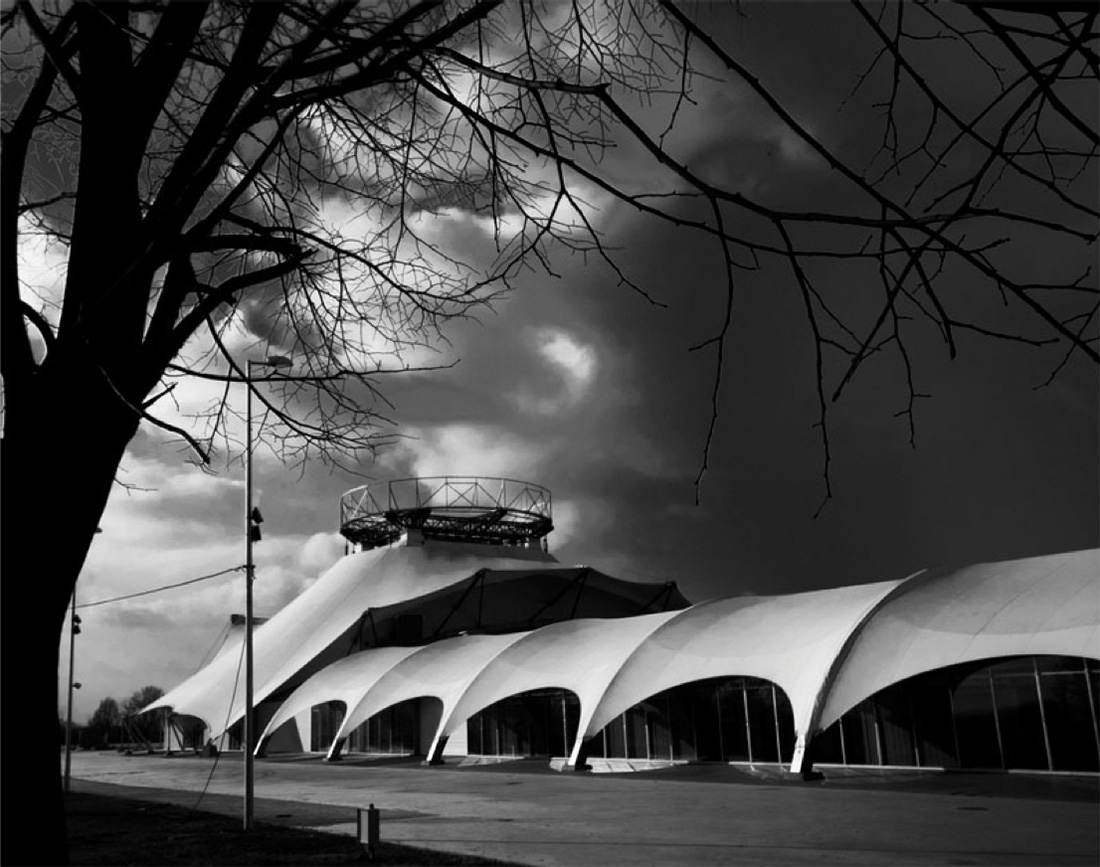
Expo Center in Pécs (2005)
Architect: Z. Bachman, B. Bachmann, G. Majoros
Extention of a former repair shop with membrane structures to an exhibition hall of 10 thousand sqm.
Have you ever been thinking about establishing cooperation among Southeast European Universities? In your opinion, what benefits can such cooperation generate?
We have a traditionally good relationship to geographically nearby universities of the region. In the past years we took part in European research projects with partners from Osijek, Maribor and Novi Sad. We join mutually conferences and exhibitions in Zagreb, Belgrade, Ljubljana, Tirana and Pristina regularly. I strongly believe, that further cooperation of the institutions of Central and South East Europe can support the economical and cultural development of our countries and contribute to a better understanding of our common past to build a livable place for the next generations.
What is your attitude to architecture in Southeast European region? What specific characteristics of the Southeast European architecture would you expose?
I take the chance every year to visit Days of Oris to join the international atmosphere of this event. Beside the personal impression of famous representatives from Western Europe and other continents of the world, the most exciting part is always the presentation of architectural projects of the region. During our study trips with students or professionals we are often guided by local architects. This way we can understand their contemporary design better, which in my opinion relies on up-to-date global trends, but at the same time it is connected to the historical roots of locality in a sophisticated manner. Modern architecture of the region shows off world class buildings with European character in scale, form and design. I especially value projects with linkage to urban fabric and the ones that re-vitalize rural architecture. I also think, that self-reflection and humor are important characteristics of our quality architecture.
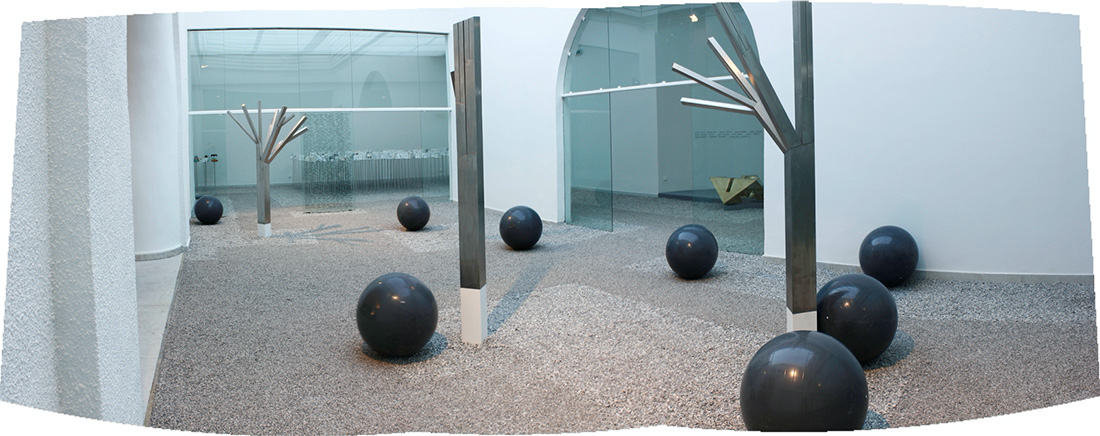
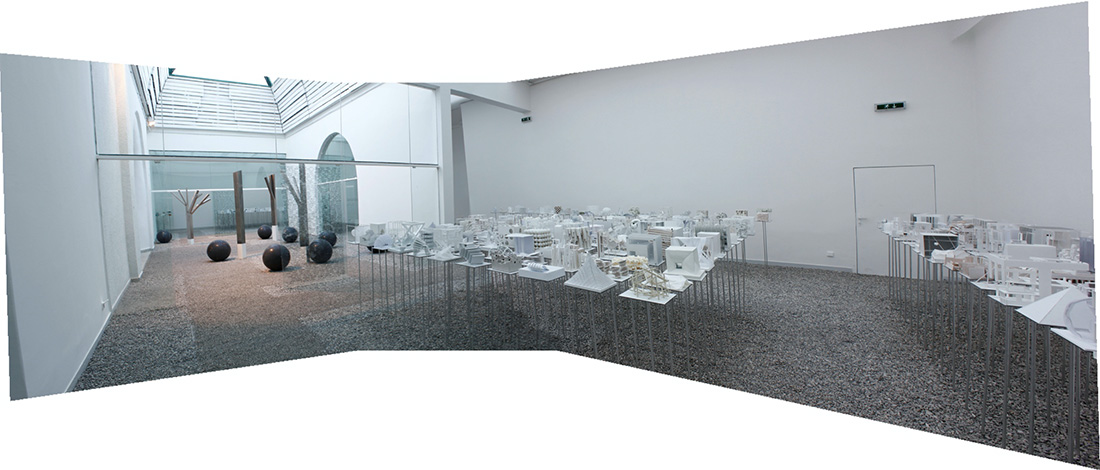
XIII. Biennale di Venezia Intallation of the Hungarian pavilion (2012)
Architects: B. Bachmann, B. Markó
The concept of exhibiting 21cmX21cmX21cm parameter architectural models of students resulted in an istallation kept in white. The interior and the patio of the historical pavilion showed the work of over 500 students of architecture and the sculptures of Antal Kelle.
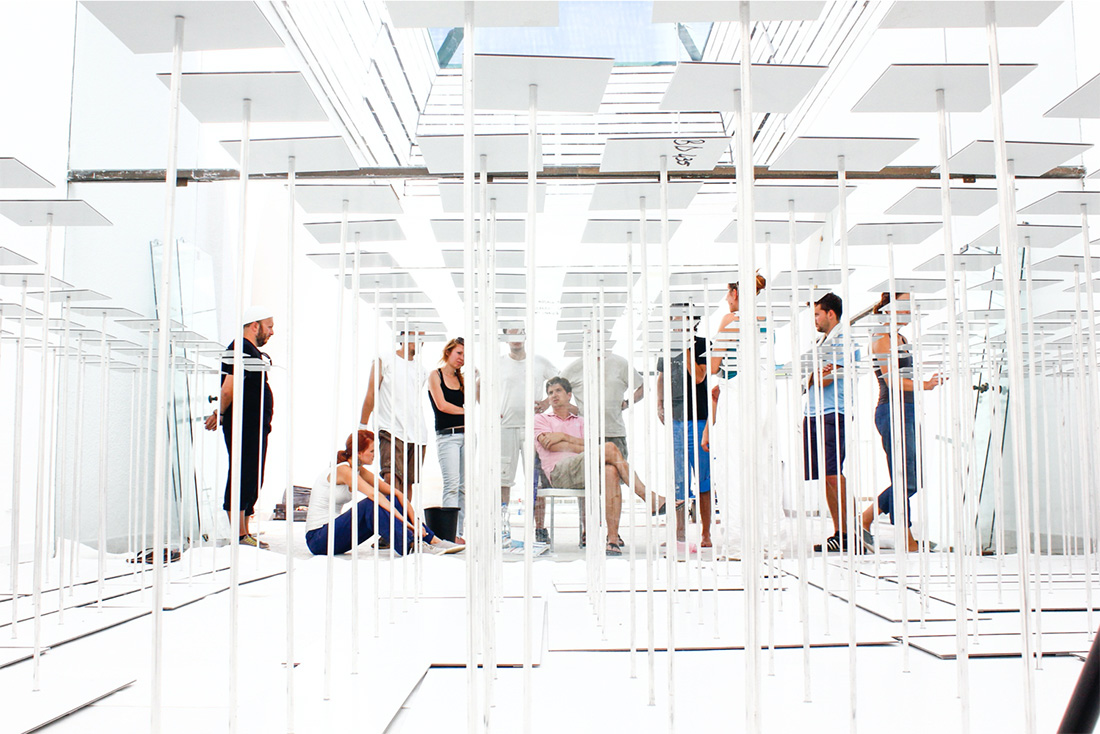
XIII. Biennale di Venezia Intallation of the Hungarian pavilion (2012)
In recent weeks, we have found ourselves in an unpredictable social and political situation which will bring about many changes, including the changes in architectural planning. In your estimation, what are the main challenges facing architecture in the future?
For me architecture is related to personal interaction both in creating buildings and of using our built environment. During the isolation we have to avoid this part of our social life. The cooperation with clients and colleagues works surprisingly smooth via online tools, which means, that distance work and digital database will be more common after the pandemic, because it is comfortable and cost-effective at the same time. The main challenge for the future of architecture is to prevent our profession from serving the building industry for outdated mass production by implementing the achievements of the digital age. Architects must be prepared to contribute to a self-supporting, environmentally conscious and locally based economy, for the benefit of mankind.
Could you describe your typical day in self-isolation during the week? What do you like about being self-isolated? What are the things you do not like about it? What do you find comforting about self-isolation?
I moved with my family to Budapest recently, schools and universities are closed, so we are locked in all day. The interference of online communication in a common physical space is part of our everyday life, but we enjoy the unusual presence of all family members at home. I miss the personal meetings with colleagues and friends and the visits to cafés and restaurants of the city. I never thought before, that online meetings can be so effective and sometimes even entertaining.
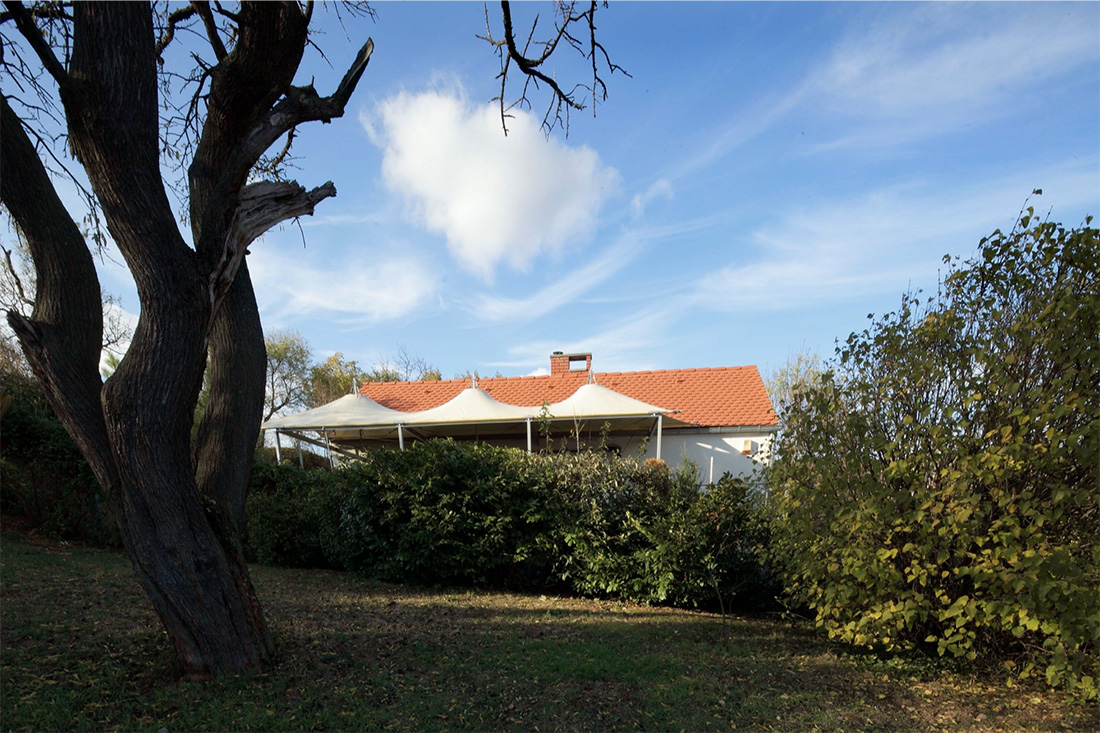
Family house in Pécs (2003)
Architect: B. Bachmann, D. Szilágyi
Interior: E. Bachmann
My own family house designed under the influence of Japanese spacial minimalism and of low budget
What public space is your favourite one and which public space do you miss these days when most of them are closed?
During the isolation I enjoyed the time I spent in the park with my dogs. Usually I am too lazy to take them out regularly, but now it is a privilege to go to the nature. I miss my senior basketball team and the weekly game ending with sportsmen’s talk and beer drinking, but we found a way to meet virtually at the time of the training.
You have authored or co-authored many academic and research works. Are you preparing anything new in these times?
We set up an interdisciplinary project to develop the biomedical engineering education and innovation involving several research groups of the university. I lead the group of experts dealing with building information modelling (BIM). We work on design influenced methods and tools to reduce the risk of health damage and accidents at work during the building process. Another group of architects and health scientists examine the criteria for human comfort in offices and classrooms to improve efficiency of the working places.
In the light of the current situation, do you think there will be any positive changes in the area of architecture in the future?
As a representative of higher education and co-owner of an architects’ office I am obliged to think positive about the changes influencing our profession. I strongly believe in the good intention and common sense of the human race, I also think, that technology-led development of our built environment can contribute to the symbiosis of civilization and diversity of life on Earth.
In your view, in which direction should architectural studies proceed in order to educate architects who will have the right qualifications to respond appropriately to contemporary social circumstances?
Beside learning integrated knowledge and skills in cutting edge technology and management methods, architects must keep their artistic creativity and protect their intellectual independence to overcome the restrictive circumstances of the present. Education shall prepare the next generation of architects to experience the complexity of the design and its execution in order to be able to coordinate the building process. The architects should be qualified to work together with engineers and other professionals representing the wider interest of the society.
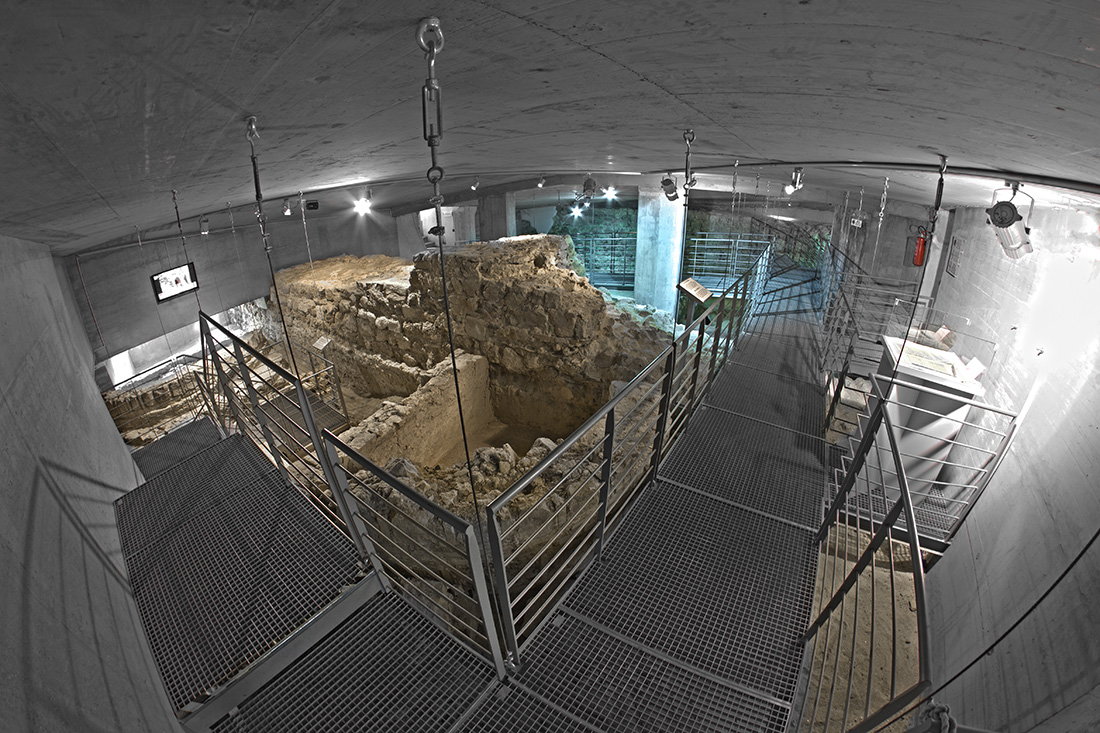
Cella Septichora Visitors’ Centre in Pécs (2006)
Architect: Z. Bachman, B. Bachmann, Gy. Stocker, M. Schrancz
Interior: K. B.Soós, K. Kovács Andor
Museum and event hall of the UNESCO World Heritage site of Pécs. IV. century (a.d.) burial chambers and chapels of the Roman age of Sophianae in the Province Pannonia protected with fully isolated and airconditioned building on the historical walking level, 4 to 8 meters under the present-day surface
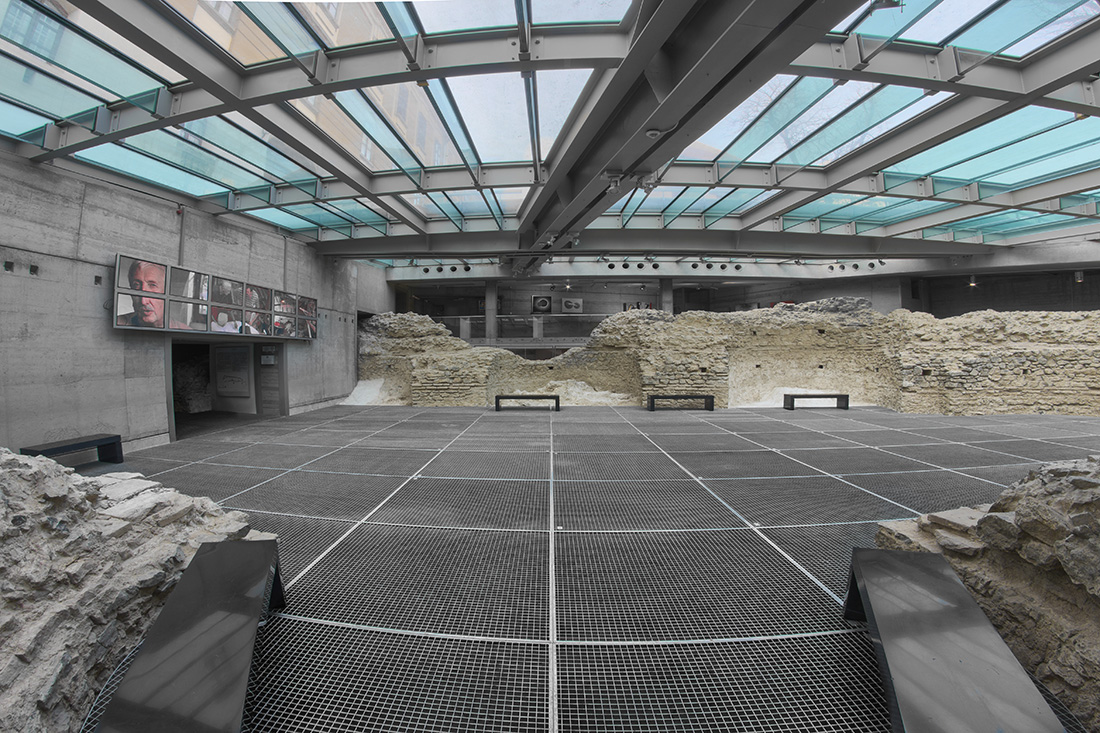
Cella Septichora Visitors’ Centre in Pécs (2006)




